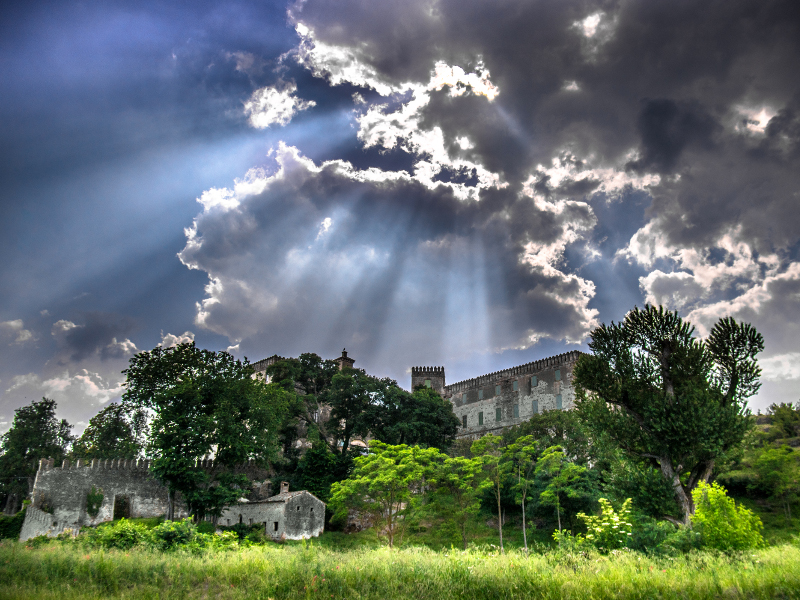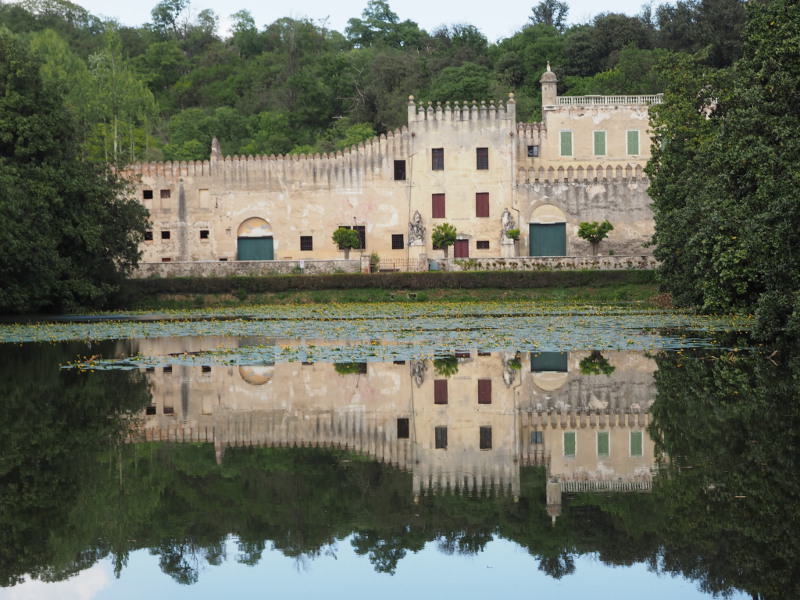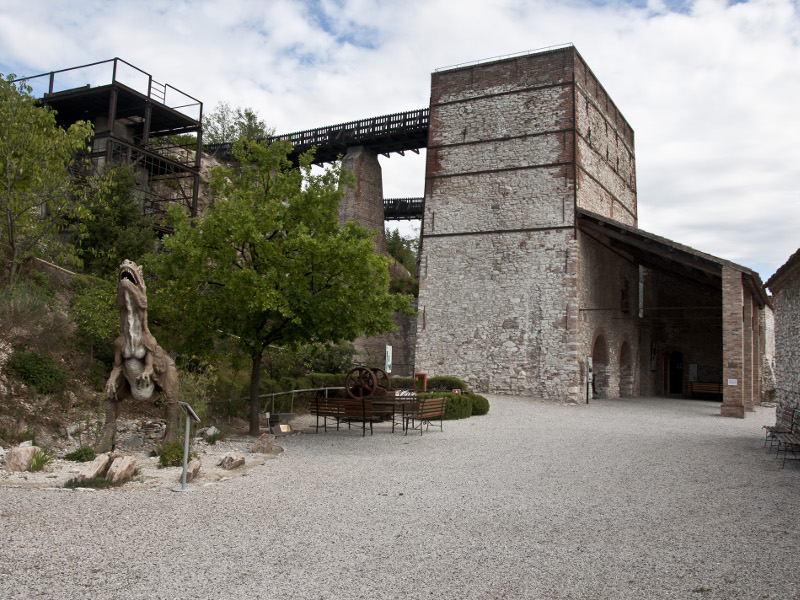There are ancient traces of the Veneti tribe in the Euganean Hills and such traces are visible. A large number of artefacts documenting the history of this area, from prehistoric times to the Roman era, are preserved in the Atestino National Museum in Este.
The oldest traces, discovered in the areas of Monte della Madonna and Mount Venda, can be dated back to the Paleolithic period and consist of manmade flint objects. Important pottery finds date from the Neolithic period (late fourth millennium b.c.), discovered in large quantities near Castelnuovo. Weapons, tools, decorative ornaments and clothing dating back to the Bronze Age (2000 b.c.), proving the existence of a marsh village, were excavated near Costa lake, in Arquà Petrarca. The Romans began settling in the area in 200 b.c. With the construction of a road network, they greatly encouraged the expansion of settlements. The Via Annia, which broke off from the Via Emilia at Legnago and headed towards Aquileia, crosses Monselice, one of the boroughs in the park's territory.
During the Middle Ages, the Euganean Hills witnessed a profusion of castles, churches and fortifications, thanks to their commanding position.
In the early fifteenth century, the area became part of the territory of the Most Serene Republic of Venice and so began the construction of magnificent homes for the Venetian aristocracy. Valsanzibio, Luvigliano and Valnogaredo still boast grand examples of the villa movement. The nineteenth century - which began under the aegis of Napoleon and ended with the area's annexation to the newly founded Kingdom of Italy - was a time that saw a significant rise in the local population and a constant exploitation of the area, with the beginning of mining activities on an industrial scale. Environmental conservation and landscape protection began in the 1970s with the gradual closure of quarries, which saw maximum implementation in 1989 with the foundation of the Regional Park of the Euganean Hills.
Art And Culture, Leafing Through... The Euganean Hills
'If only I could show you the second Helicon I have prepared for you and the muses in the Euganean Hills! I am sure you'd never want to leave.'
These were the words Petrarch used to celebrate the Euganean Hills, explicitly referring to them in a letter - XLVI of his
Variarum - sent to his friend Moggio of Parma. Even though we know that the poet never mentions the Euganean Hills outright in his works, some scholars believe that many sections of his
Canzoniere seem to be inspired by the landscape of the Euganean Hills and his stay in Arquà - from 1369 to 1374, the year of his death - influencing the many Italian and foreign writers who wrote about the Euganean Hills, particularly in the Romantic period. During the 1500s - as Boccaccio (1313-1375) prophesied in his epistle to Francesco da Brossano of 3 November 1374 where he describes Arquà as a town that is destined to become famous thanks to its ties with the great poet Petrarch - Arquà and the Euganean Hills became a place of literary pilgrimage inspiring lyrical, incomparable pages in the best-loved classics and in passionate letters written by Romantic poets and writers. Writers inspired by these hills include Marcus Valerius Martialis (Martial), born in Spain in 40 a.d. and the author of the Epigrams - a monumental work on Imperial Rome - and Claudian (Claudius Claudianus), a poet of late antiquity who lived from the end of the fourth century to the first decades of the fifth century. The area's beauty was also appreciated by Ugo Foscolo (1778-1827) and was described in many of the passages that make up the
Last Letters of Jacopo Ortis. Percy Bysshe Shelley (1792-1822), one of the greatest English poets, is worth mentioning as he offers a personal and striking view of these hills. Two masterpieces of the Romantic movement -
Julian and Maddalo (1818) and
Prometheus Unbound (1820) - were written by Shelley in Villa Cappuccini in Este, hence against the backdrop of the Euganean Hills.
I gatti vulcanici, written by Dino Buzzati (1916-2000) and dedicated to the Euganean Hills, could even be called a text of civic ethics: the author uses a short fantasy story to condemn the destruction perpetrated by diggers along the slopes of the Euganean Hills.
Giorgio Bassani (1916-2000), the author of The Garden of the Finzi-Continis and certainly more famous as a novelist than as a poet, wrote a poem in honour of the area: Monselice consists of a collection of poems entitled L'Alba ai Vetri ('Dawn at the Windows', 1963). Gabriele D'Annunzio (1863-1938) in his account of the Euganean Hills in Il fuoco ('Fire', 1900) is not particularly true-to-life as he disregards the wild and rugged side of the area in preference for a gentle, sensual image.
Last but not least, Antonio Fogazzaro (1842-1911) describes the area in the second chapter of Piccolo Mondo Moderno ('The Man of the World', 1901), dedicating almost an entire passage to the abbey of Praglia.






